A Little Bit of Heaven
With some reluctance, our consultant editor Ian Belcher reveals his top five boutique hotels in Southeast Asia, proving that good things can and do come in small packages.

With some reluctance, our consultant editor Ian Belcher reveals his top five boutique hotels in Southeast Asia, proving that good things can and do come in small packages.
Chakrabongse Villas proves size does matter – and contacts are pretty useful too. The small but perfectly formed hotel, owned by King Rama V’s great-granddaughter, is drizzled through the lush grounds of a pastel-hued Italianate mansion in the low-rise royal quarter of Bangkok. The anodyne skyscrapers of the manic modern city belong to a different world. Along with its three Moroccanthemed rooms – price-conscious options – the six super-stylish suites and apartments offer eclectic Asian design featuring Chinese antiques, contemporary Thai art and walls of teak and silk.
Several decks offer widescreen city views but the ultimate lookout is the balcony of the palace’s penthouse suite, which used to host guests of Prince Chula Chakrabongse. The hotel makes full use of its glorious riverside location opposite the Temple of Dawn – ironically at its best at night – with excellent dining on a floating pontoon. Don’t miss the snow fish with tamarind, one of the restaurant’s exquisite Thai dishes.
Explore the area
Believe it or not, you are staying in one of Bangkok’s many waterside mansions; get out on the Chao Praya River where you’ll soon find more examples of architectural styles ranging from Art Deco to Oriental to Bavarian cream cake. Either catch one of the city’s multicoloured long-tail boats or splash out on a trip in Seri, Chakrabongse Villas’ classic Venetian-style wooden launch.
On dry land you’re within strolling distance of the night flower market’s explosion of blooms and Wat Pho’s renowned massage school, where a fiver buys you a half-hour’s firm but strangely relaxing pummelling. You’re also not far from the sprawling Grand Palace, home to Thailand’s most sacred site, the 66cm-tall Emerald Buddha. And if you’re hungry to taste modern Bangkok, take a taxi and then an elevator to the al fresco Vertigo and Moon Bar Restaurant on the 61st floor of the Banyan Tree hotel. The tenderloin wagyu is served with cherry tomatoes, sautéed mushrooms and an eye-popping 360-degree urban panorama.
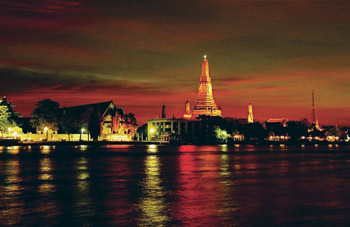
Doubles from £103. http://thaivillas.com http://tourismthailand.org
Prepare for a contrast. The world doesn’t get much greener than the fertile interior of Bali – and interior design doesn’t get much cleaner than the cream walls, bright white bathrooms and light wood of the 29 rooms and suites at Uma Ubud. This shouldn’t come as a surprise. The elegant hillside retreat fits seamlessly into the perfectly formed portfolio of Christina Ong, a queen of understated style. So expect sumptuous four-poster beds draped in white voile, and sunken baths and showers that open to the balmy tropical air. French doors lead onto private terraces, some with plunge pools and views of the Tjampuhan Valley and verdant jungle.
Serenity also comes in the form of yoga in the hotel’s tranquil pavilion, guided morning hikes and spa therapies at the acclaimed COMO Shambhala Retreat, where the Asian-inspired treatments include an Indonesian massage with long pressure strokes and Javanese essential oils. The strong regional influence extends to Kemiri, the resort’s al fresco restaurant set next to a waterfall-fed pool. Here chef Amanda Gale blends gourmet Balinese and contemporary Southeast Asian dishes. Expect the likes of Chinese roast pigeon, grilled Lombok lobster or banana-wrapped steamed snapper with coconut sambal.
Explore the area
Uma Ubud’s only 20 minutes from Ubud centre – so it’s within easy reach of museums, galleries and temples on the one hand, and forest treks, Tegallalang’s jade-green rice terraces and white-water rafting on the Ayung River on the other. Sitting on the southern foothills of the central mountain range, well away from the rampant commercialism of south coast hotspots Kuta and Nusa Dusa, Ubud is a cultural hub and home to the modern Balinese art movement.
Check out the Puri Lukisan Museum, the Agung Rai Museum of Art and the sprawling galleries of Ketut Rudi, where you’ll find exhibits by more than 50 local artists. Shop for hand-crafted homeware at Tegun Galeri, then hit the courtyard of Puri Saren Agung, the former palatial home of the last king of Ubud, for traditional dance performances, ranging in style from Ramayana ballet to legong and kecak dance. If you’d like a side serving of religion with your rhythm, there are three temples swaddled in the nearby jungle, not to mention 115 species of tree and 340 long-tailed macaques in the sacred monkey forest of Padangtegal to admire.
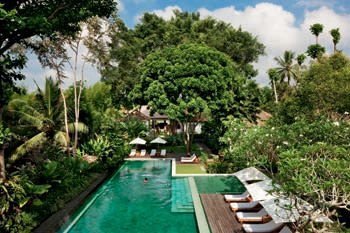
Doubles from £166 (including breakfast, daily yoga and guided walks). http://uma.ubud.como.bz http://indonesia.travel
Bon Ton punches well above its weight. The petite bolthole, laced through the towering palm trees of a century-old coconut plantation in south-west Langkawi, has graced several World’s 100 Best Hotels lists – for a fraction of the cost of many of the others – and serves some of the best Malaysian fare on the island.
First a note of caution: this hotel is likely to induce major interior design envy. Its eight photogenic villas – traditional wood houses of Malay, Chinese and Indian origin – have been relocated around a narrow swimming pool and converted into cosy accommodation. Ranging from a simple 60-year-old fishing cottage to a century-old nobleman’s house with elaborate carvings, their varied styles and sizes sport bright fabrics, plantation-style shutters and bathrooms or decks under the stars. They offer dreamy sundowner views across lotus-specked wetlands crawling with egrets, heron and buffalo.
Perhaps the biggest treat is the eclectic pan-Asian/European cuisine of Nam Restaurant. Raymond Blanc rates it as some of Malaysia’s very best dining, Rick Stein adores the curries and Kylie Minogue has been known to nip into Bon Ton while staying at one of the island’s pricey five-star resorts, sampling the likes of prawns in pandan leaf, tamarind fish, and mango and cashew rice.
Explore the area
You’ll need a car or scooter to see the best of Langkawi. Malaysia’s numero-uno holiday honeypot – sprouting out of the Andaman Sea 30km west of the mainland – is generously endowed with fecund hills frescoed with lush vegetation, serene paddy fields and satisfying slashes of blond sand. The nearest to Bon Ton is the sun-pickled expanse of Pantai Cenang, and further north is family favourite Pantai Kok. Catch either on a clear day and the Andaman Sea dazzles like an underlit Los Angeles swimming pool.
For a different kind of wet-and-wild thrill, hike 2.5km into the interior to Telaga Tujuh where a curtain of water plummets 100 metres via seven shallow pools, some of which you can slide between on the naturally polished stone. Want to go higher? Drive the road snaking through dense vegetation to the island’s high point, Gunung Raya, which has remarkable views stretching out to neighbouring Thailand. Given that Langkawi is just one of 99 islands, you also have the option of heading offshore. Pulau Payar Marine Park, 35km to the south, is a splatter of tiny dots of land that, rather conveniently, boast an underwater observation deck for ogling the brilliantly coloured fish that hover around the reef. The coral haven also offers great
snorkelling opportunities.
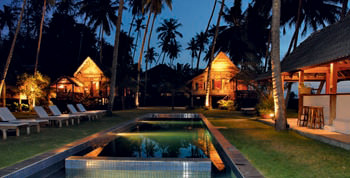
Villas from £103 per night (including breakfast). http://templetree.com.my http://tourism.gov.my
To breathe in the serenity of Luang Prabang, to inhale its unique, almost otherworldly balm, you must stay in the north Laotian city’s Unesco-listed old quarter. The layout ensures local accommodation stays small scale, boutique and atmospheric – and there are few lovelier examples than The 3 Nagas with its pared back, elegant conversion of three historic buildings.
Blending classic and contemporary design elements, the hotel accentuates traditional Laos architecture – dark hardwood floors, cream-coloured torchis walls and clay roof tiles – with luxuriant silks, subtle weaves, pots and sculptures. Perfectly matched to the area’s laid-back vibe, this is design that whispers rather than shouts. And the hotel maintains its understated and intimate charm by splitting a mere 15 rooms and suites – all equipped with king-sized beds and a verandah or terrace – between the Khamboua House, built in 1903 with lush gardens that kiss one of Luang Prabang’s two rivers; and the Lamache House, opened five years earlier for the Laotian royal family before being converted into an ice-cream factory in the 1930s. The 3 Nagas’ acclaimed restaurant mines the regional theme, adding just a touch of Gallic flair to classic Laotian dishes such as bamboo soup with bitter leaves and fried makohng fish with ginger sauce.
Explore the area
You can hit the streets, of course, but at a relaxed pace. Luang Prabang, poetically labelled ‘the refuge of the last dreamers’, doesn’t do frantic. Great coffee and fresh pastries, yes. But frantic? Never. Pinched like a delicate morsel between the chopsticks of the Mekong and Nam Khan Rivers, the old quarter is perfect for a meander through French colonial streets flanked by old Laotian wood houses and no less than 32 temples.
The 3 Nagas is ideally sited for guests to fall into the rhythm of local daily life. After witnessing the dawn ritual of saffron-robed monks shuffling through the streets to collect alms, it’s time to join residents on their short journey to the local food market. Squeamish animallovers may want to give it a wide berth, though, because dead bats, buffalo toes and steamed wasp larvae sit cheek by jowl with live snakes, frogs and moles. The night market’s a little easier to digest. Its colourful handicrafts, lamps and clothes are apparently made in surrounding hill villages, providing them with an alternative living to the once ubiquitous opium farming. Above the lines of glowing stalls, floodlit Wat Chom Si, perched on a central hill, appears to float in the ink-black sky – a potent symbol for one of Asia’s most magical destinations.
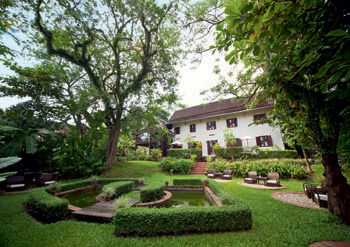
Doubles from £81. http://3-nagas.com http://tourismlaos.org
If you want to escape the maddening crowds in the north-west Cambodian city, go small. Very small. With just three rooms, Hotel BE Angkor is about as far as you can get from the vast, often impersonal hotels on the airport road. But it’s not just about size, it’s about style. The dazzling reception and individually designed rooms showcase the work of locally based artists. You may find yourself gazing upon drawings of the rattan and bamboo sculptures of Sopheap Pich, the quirky gold and saffron canvasses of Loven Ramos or the sepiatinged temples of Angkor Wat by photographer John McDermott – hailed as the Ansel Adams of Angkor by The New York Times. Each room boasts a private roof terrace and eye-catching design features such as a two-storey atrium living area, steel bridge entrance or a dividing wall of sculpted tree branches. With rumours of a massive new Vietnamese-funded resort being developed on the edge of the city, it’s a great time to celebrate Hotel BE’s small-scale, whimsical charm.
Explore the area
Like everyone else, you’re here for the vast, mesmerising network of temples – the heart of the largest pre-industrial city on earth – threaded through tropical forest and farmland. Give yourself days to appreciate their astonishing design, architectural features and exquisite carved decorations. Don’t miss Bayon’s haunting stone faces and Ta Prohm’s gnarled tree roots grasping at ancient ruins before finishing at the vast 12th-century complex of Angkor Wat. Get to its upper terrace in the milky light of dawn and wait for one of the more memorable sunrises of your life.
Templed out? Swap Siem Reap for the Kompong Phluk floating village or travel 30km to the Landmine Museum. Here you’ll find piles of unexploded ordnance and knowledgeable guides who have been orphaned or injured by mines, a tragic legacy of the country’s recent conflict. Head back to town for dinner at the former Foreign Correspondents’ Club, now a hotel, or the Khmer-inspired cuisine of AHA (below Hotel BE). Dishes at the latter range from green mango and dried snake salad to the slightly less exotic grilled prawns and radicchio with duck confit.
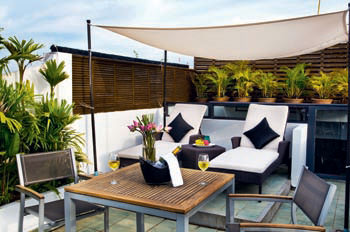
Doubles from £73. http://hotelbeangkor.com http://tourismcambodia.com
Subscribe and view full print editions online... Subscribe